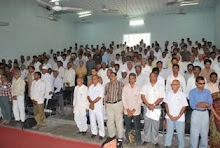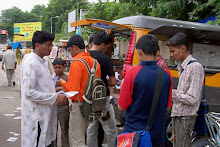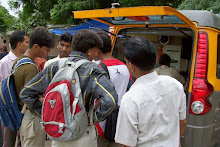Economic
Times: New Delhi: Tuesday, 07 July 2015.
India enacted
the Right to Information Act a decade ago, but not even 1 per cent of the
country's population exercises its power under the transparency law. A
nationwide study by Commonwealth Human Rights Initiative has revealed that only
0.37-0.41 per cent of India's population sought information under the RTI Act
in 2014.
As per the
first of the annual survey on the number of citizens using their right to know,
CHRI found that as a proportion of the electorate, people aged 18 years and
above, this percentage works to 0.5-0.6 per cent of the population. Though the
absolute number of RTI applications is increasing, the micro trend points to a
male-female and rural-urban divide.
The study,
which analyses data of different states, revealed that only Chhattisgarh among
states captured the urban-rural break-up of RTI applicants. Less than a fifth
of the applicants (19.85 per cent) were living in villages in the state.
Although Chhattisgarh registered a 21 per cent increase in the number of RTI
applications across the state in 2014 over that in the previous year, the
proportion of rural applicants went down.
The study
also shows that more men file RTI applications than women. "Only two state
information commissions have captured gender break-up of RTI applicants -
Chhattisgarh and Nagaland. In Chhattisgarh, women constituted 6.9 per cent of
the RTI applicants while in Nagaland they comprise 2.53 per cent of the RTI
applicants," says the study. It points out that the number of women
applicants has fallen over the years. In 2014, a similar study RAAG-2 report
had shown that women comprise about 8 per cent of the total applicants, which
is higher than the figures thrown up by the CHRI study.
An analysis
of socio-economic background of applicants shows an increase in applicants from
Scheduled Castes and Scheduled Tribes. Chhattisgarh, the only state which has
captured the indicative trend, shows that RTI applicants belonging to Scheduled
Castes nearly doubled in a year, with 6.37 per cent of the applicants belonging
to Scheduled Castes.Similarly, the percentage of RTI applicants from Scheduled
Tribes grew to 5.5 per cent in 2014 from 3.06 per cent in 2013.
"The
steady increase in the absolute numbers as well as in terms of percentage
augurs well for the success of RTI Act as it is primarily aimed at empowering
the disadvantaged segments of society to hold government and its
instrumentalities accountable," says the report.














































































